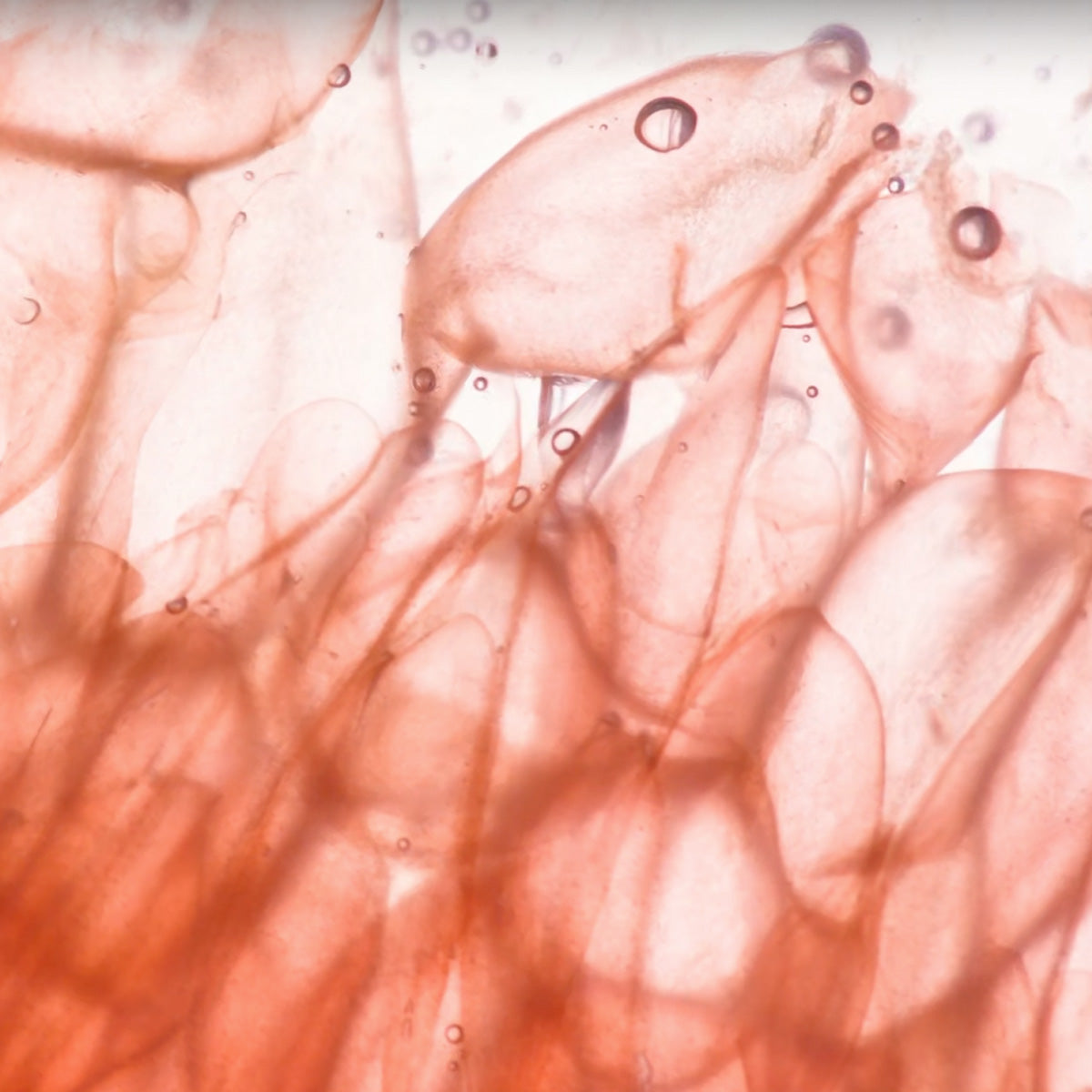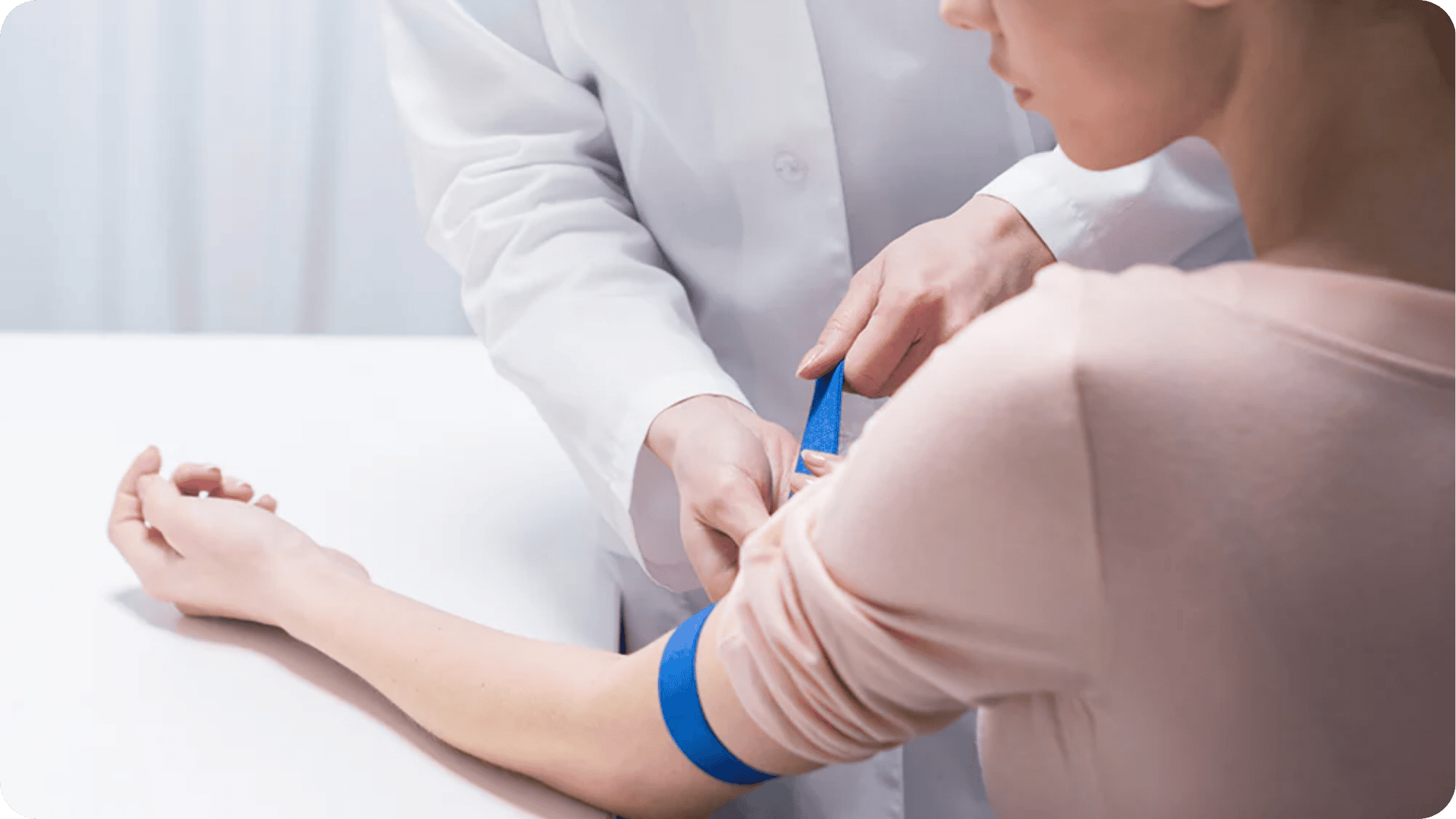Severe menstrual pain, unexplained abdominal cramps, and the feeling that no one really takes your symptoms seriously – this is how many women who suffer from endometriosis feel. You are not alone! Endometriosis is one of the most common gynecological diseases, yet it often goes undiagnosed for years. In this article, you'll learn what endometriosis is, what symptoms it causes, and what measures can help you better manage this condition.
The most important things in brief
Endometriosis affects approximately 10% of girls and women of childbearing age, but often goes undetected. It can cause severe pain and infertility.
The exact causes are not fully understood , but retrograde menstruation, hormonal disorders and genetic factors play a role.
Treatment options include hormone therapy, surgical interventions, and multimodal pain therapies. An anti-inflammatory diet can also be helpful.
What is endometriosis?
Endometriosis is a chronic, benign condition in which endometrial-like cells grow outside the uterus. These cells form so-called lesions, which often occur in the ovaries or abdomen.
The problem: These lesions behave like the uterine lining during the menstrual cycle. They build up and are shed, but without the ability to drain. The consequences are:
- Pains
- Inflammations
- Adhesions
- Cyst formation, which can cause additional pain [2,3].
Endometriosis affects approximately 10% of women of childbearing age in Germany [1]. Unfortunately, the disease often remains undetected for a long time.


What causes endometriosis?
The exact causes of endometriosis are not clearly understood. However, experts suspect several contributing factors:
- Retrograde menstruation: Endometrium is transported through the fallopian tubes into the abdominal cavity, which can cause inflammation [4,5].
- Hormonal disorders: Hormones influence the growth of endometriosis lesions.
- Genetic factors: The risk of endometriosis is increased by 50% if close relatives are affected [6].
-
Other risk factors :
- Early menstruation
- Short menstrual cycle
- Frequent bleeding [7]


Did you know?
During menstruation , a woman loses about 30 to 80 milliliters of blood , which is equivalent to about two to five tablespoons or a small cup of espresso.
What symptoms occur with endometriosis?
The symptoms of endometriosis are diverse and range from mild to severely disruptive to everyday life. The most common symptoms include:
- Severe menstrual pain accompanied by abdominal cramps.
- Pain during sexual intercourse (dyspareunia).
- Problems urinating or defecating.
- Intermenstrual bleeding and chronic abdominal pain.
- Infertility: Approximately 40–50% of women with infertility problems suffer from endometriosis [2,8].
However, some women do not have any symptoms and the condition is only discovered during infertility tests.
Discover the patented premium inositol complex Caronositol Fertility® in the ideal 3.6:1 ratio. With activated folic acid, Be5 promotes hormonal balance, maternal tissue growth, and your well-being – all in just 2 easy-to-take vegan capsules per day. 100% free of unnecessary additives, for your health and a conscious everyday life.
👉 Discover now and support your body!
Diagnosis & Therapy:
The long road to relief
Endometriosis often goes undetected for a long time – on average, it takes seven to ten years to be diagnosed. Many women feel like they aren't being taken seriously during this time. The following diagnostic steps are common:
- Gynecological examination & ultrasound: First indications of endometriosis lesions.
- Laparoscopy : The gold standard for reliable diagnosis. The lesions can also be removed directly.
If you suspect this, you should definitely have your gynecologist examine you and possibly refer you to a specialized endometriosis center [9,10,11].

After diagnosis, therapy is the next step:
The treatment of endometriosis aims to relieve symptoms and prevent complications such as infertility:
- Surgical removal of the lesions : This is usually done during diagnostics via laparoscopy.
- Hormone therapy : Taking hormones such as the contraceptive pill suppresses the buildup of the uterine lining, which can relieve pain.
- Fertility treatment: Women who wish to have children should visit a specialized fertility center.
- Painkillers : Medications such as ibuprofen help with acute pain, but should only be used for a short time [12,13].

What else you can do
In addition to medical treatment, there are measures that can alleviate your symptoms and improve your quality of life:
1. Multimodal pain therapy
This therapy combines different approaches, such as:
- Physiotherapy to relieve tension in the pelvic area.
- Relaxation exercises such as yoga or mindfulness training.
- Psychological support for pain management [14,15].
2. Anti-inflammatory diet
An anti-inflammatory diet can reduce inflammation and pain. Studies show that avoiding highly processed foods, sugar, grains, dairy products, and red meat can be helpful [16,17,18,19].
Instead, focus on:
- Lots of vegetables and fruit
- Omega-3 fatty acids from fish or flaxseed
- Nuts and seeds
- High-quality vegetable oils
Conclusion
Endometriosis is a common, yet often overlooked, condition that severely impacts the lives of many women. Although diagnosis often takes a long time, there are now a variety of treatment options that can relieve pain and improve quality of life . It's important that you seek medical help and don't feel alone with your symptoms . Severe menstrual pain is not normal and should be investigated.
If you suffer from endometriosis or suspect you may have it, don't hesitate to consult a specialized doctor or endometriosis center. With the right support and a combination of medical therapy and lifestyle changes, you can make managing this condition easier.
Our expert
What is endometriosis?
It's a chronic condition in which endometrial-like cells grow outside the uterus. These growths cause pain, inflammation, and sometimes infertility.
How common is endometriosis?
Approximately 10% of women of childbearing age are affected. Yet the disease often goes undiagnosed because it causes nonspecific symptoms and many doctors are not specialized in it.
What causes endometriosis?
The exact causes are unclear, but retrograde menstruation, hormonal imbalances, and genetic predisposition play a role. Women with a family history of endometriosis are at increased risk.
Can endometriosis be cured?
The disease is currently incurable, but symptoms can be alleviated with hormone therapy, surgery, and pain management.
Can I get pregnant despite endometriosis?
Yes, pregnancies are possible. Women who wish to have children should contact a fertility clinic, as more intensive treatment is sometimes necessary.
Which diet helps with endometriosis?
An anti-inflammatory diet can alleviate symptoms. Avoid sugar, dairy products, and highly processed foods. Instead, focus on vegetables, fruit, omega-3 fatty acids, and vegetable oils.
References for further reading:
- Endometriosis Research Foundation: Endometriosis – what is it? https://www.endometriose-sef.de/patienteninformationen/was-ist-endometriose/ (accessed July 4, 2023)
- Institute for Quality and Efficiency in Health Care: Endometriosis https://www.gesundheitsinformation.de/endometriose.html (accessed on July 4, 2023)
- Gynaecologists online: Endometriosis https://www.frauenaerzte-im-netz.de/erkrankungen/endometriose/ (accessed on July 4, 2023)
- Vinatier D, Orazi G, Cosson M, Dufour P. Theories of endometriosis. Eur J Obstet Gynecol Reprod Biol. 2001 May;96(1):21-34. doi: 10.1016/s0301-2115(00)00405-x. PMID: 11311757.
- World Health Organization: Endometriosis https://www.who.int/news-room/fact-sheets/detail/endometriosis/?gclid=CjwKCAjw2K6lBhBXEiwA5RjtCWsYJh06ZQ40pHoG1lWV0lkDiigvJRWsrilWXIfu6y7I3SUHAUWQVhoCNvcQAvD_BwE (accessed on July 4, 2023)
- Rahmioglu N et al. The genetic basis of endometriosis and comorbidity with other pain and inflammatory conditions. Nat Genet. 2023 Mar;55(3):423-436. doi: 10.1038/s41588-023-01323-z. Epub 2023 Mar 13. PMID: 36914876; PMCID: PMC10042257.
- Wei M, Cheng Y, Bu H, Zhao Y, Zhao W. Length of menstrual cycle and risk of endometriosis: A meta-analysis of 11 case-control studies. Medicine (Baltimore). 2016 Mar;95(9):e2922. doi: 10.1097/MD.0000000000002922. PMID: 26945395; PMCID: PMC4782879.
- Endometriosis Association Germany: What is endometriosis? https://www.endometriose-vereinigung.de/was-ist-endometriose.html (accessed July 4, 2023)
- Austrian Public Health Portal: Endometriosis: Diagnosis https://www.gesundheit.gv.at/krankheiten/sexualorgane/weibliche-sexualorgane/endometriose-diagnose.html#:~:text=With%20a%20vaginal%20ultrasound,This%20procedure%20is%20under%20general%20anesthesia. (Accessed on July 4, 2023)
- Endometriosis Association Germany: Diagnosis https://www.endometriose-vereinigung.de/diagnose.html (accessed on July 4, 2023)
- Hudelist G, Fritzer N, Thomas A, Niehues C, Oppelt P, Haas D, Tammaa A, Salzer H. Diagnostic delay for endometriosis in Austria and Germany: causes and possible consequences. Hum Reprod. 2012 Dec;27(12):3412-6. doi: 10.1093/humrep/des316. Epub 2012 Sep 17. PMID: 22990516.
- German Society of Gynecology and Obstetrics: Guideline Program for the Diagnosis and Treatment of Endometriosis https://endometriose-vereinigung.de/files/endometriose/artikel/Interdisziplinaere%20S2k-Leitlinie%20fuer%20die%20Diagnostik%20und%20Therapie%20der%20Endometriose%202020.pdf (accessed on July 4, 2023)
- Ärzteblatt: Diagnosis and Therapy of Deep-Infiltrating Endometriosis https://www.aerzteblatt.de/archiv/77157/Diagnose-und-Therapie-der-tief-infiltrierenden-Endometriose#:~:text=Die%20gesch%C3%A4tzte%20Pr%C3%A4valenz%20der%20Endometriose,48%20Prozent%20eine%20Endometriose%20nachweisbar . (accessed on July 4, 2023)
- Kempe, S. Early hormone and pain therapy prevents pain syndrome in endometriosis. Pain Med. 38, 18–19 (2022). https://doi.org/10.1007/s00940-022-3376-6
- German Pain Society: Interdisciplinary multimodal pain therapy https://www.schmerzgesellschaft.de/topnavi/patienteninformationen/netzwerke-der-versorgung/interdisziplinaer-multimodale-schmerztherapie (accessed on July 4, 2023)
- Uebel U. Anti-inflammatory nutrition. Uro-News. 2021;25(9):40–3. German. doi: 10.1007/s00092-021-4657-4. Epub 2021 Sep 10. PMCID: PMC8423505.
- Arab A, Karimi E, Vingrys K, Kelishadi MR, Mehrabani S, Askari G. Food groups and nutrients consumption and risk of endometriosis: a systematic review and meta-analysis of observational studies. Nutr J. 2022 Sep 22;21(1):58. doi: 10.1186/s12937-022-00812-x. PMID: 36138433; PMCID: PMC9503255.
- Liu P, Maharjan R, Wang Y, Zhang Y, Zhang Y, Xu C, Geng Y, Miao J. Association between dietary inflammatory index and risk of endometriosis: A population-based analysis. Front Nutr. 2023 Feb 27;10:1077915. doi: 10.3389/fnut.2023.1077915. PMID: 36923699; PMCID: PMC10008869.
- van Haaps A, Wijbers J, Schreurs A, Mijatovic V. A better quality of life could be achieved by applying the endometriosis diet: a cross-sectional study in Dutch endometriosis patients. Reprod Biomed Online. 2023 Mar;46(3):623-630. doi: 10.1016/j.rbmo.2022.12.010. Epub 2022 Dec 17. PMID: 36702643.



![Zinc Capsules [Zinc Bisglycinate]](http://cellavent.de/cdn/shop/files/CH_essentials-zink-kapseln-Produktbilder_2025.png?v=1760952204&width=104)



















Leave a comment
This site is protected by hCaptcha and the hCaptcha Privacy Policy and Terms of Service apply.